Religion
Cherry Berry Wine
Biblical revisionism regarding the influence of alcohol on historical events.
Posted By: Paul - Mon Aug 24, 2020 -
Comments (0)
Category: Music, Religion, 1960s, Alcohol
Cooking with God
Poe's Law, loosely paraphrased, states that it can be very difficult to tell the difference between parodies of extreme beliefs and sincere expressions of those beliefs.Confusion of this kind occurred with the 1976 cookbook Cooking With God. The authors, Lori David and Robert Robb, intended it to be, in all seriousness, a religious-themed cookbook. But due to the title, many people apparently assumed it was some kind of joke.
Recipes included Manna Honey Bread, Oasis Stuffed Eggs, Caravan Sweet Potatoes, and Eggs Bathsheba.
If you want a copy to add to your collection of weird cookbooks, you can pick one up used on Amazon for $6.95.
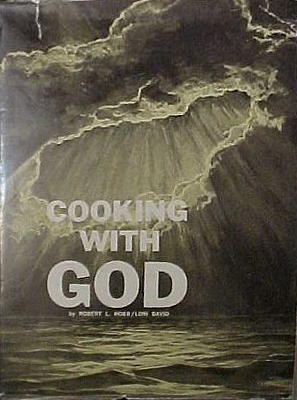

Fort Worth Star Telegram - Mar 16, 1977
Posted By: Alex - Wed Aug 05, 2020 -
Comments (5)
Category: Food, Cookbooks, Religion, Books
Out of This World by Jam Handy
Heaven and Hell battle for the soul of a bread salesman.
Posted By: Paul - Thu Jul 02, 2020 -
Comments (0)
Category: Food, Religion, Supernatural, Occult, Paranormal, 1950s, Gambling, Casinos, Lotteries and Other Games of Chance
Jesus in a Tree
Last month, crowds in Magangue, Columbia flocked to see an image resembling Jesus that appeared in a tree at night.Streetlights beneath the tree created the illusion. So it's not clear why no one had ever noticed it before.
As far as pareidolia goes, it's actually a pretty good one.
More info: The Sun

The tree during the day:

Posted By: Alex - Sat May 30, 2020 -
Comments (1)
Category: Religion, Pareidolia
Sweet Jesus Chocolate
Created in 1991 by Australian philosophy student Richard Manderson. They were Jesus-shaped chocolates filled with raspberry jam so they would "bleed" when bitten.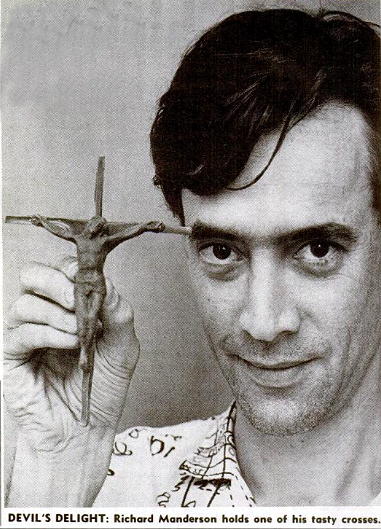
Weekly World News - May 21, 1991
More info from wikipedia:
When a US newspaper condemned his act of depicting Jesus on a chocolate, Manderson decided in answer to create an actual life-size chocolate Jesus he called Trans-substantiation 2. He did so by filling a plaster mold with fifty-five pounds of melted chocolate. He used chocolate-dipped strings for hair and plastic Easter wrap for a loincloth. Manderson's work was exhibited in public around Easter in 1994, with Manderson inviting the public to come and eat his chocolate Jesus work after the exhibition.
The Jesus Question blog delves more deeply into the history of chocolate Jesuses.
Posted By: Alex - Fri May 15, 2020 -
Comments (8)
Category: Religion, Candy, 1990s
Does holy water help radishes grow better?
In 1979, researcher Sandra Lenington of the University of Santa Clara set out to answer this question. Her curiosity had been sparked by learning that Canon William V. Rauscher had reported that “canna plants given holy water left over from use in religious services grew more than three times higher than canna plants which were not given holy water.” She decided to try to duplicate his observations under more rigorous conditions.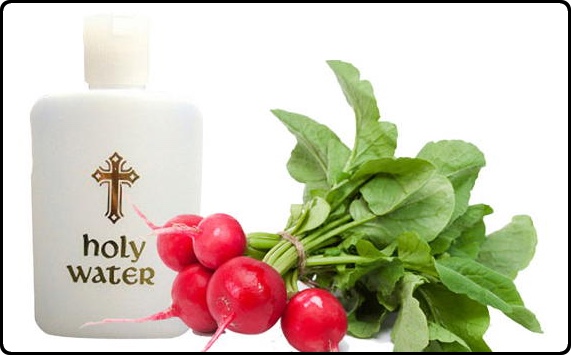
She watered one group of radishes with regular water, and a second group with holy water. After three weeks, she concluded that there was “no significant difference in the growth rates of these radish plants given holy water versus radish plants given tap water.” She published her results in the journal Psychological Reports (1979, 45, 381-382).
However, she noted that Canon Rauscher believed in the power of holy water, whereas she didn’t, and this may have affected the outcome of her study: “There are numerous documented studies showing that positive or negative belief will either benefit or adversely affect plant growth.” She suggested that future studies might try to better control for this variable.

click to enlarge
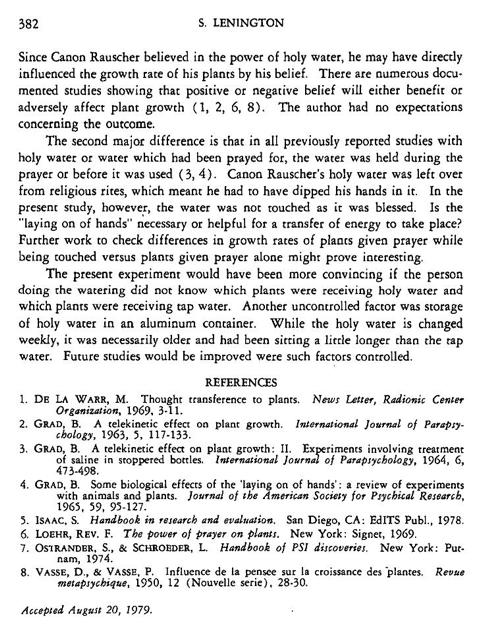
click to enlarge
Posted By: Alex - Sat Feb 01, 2020 -
Comments (3)
Category: Religion, Science, Vegetables, 1970s
Faith Healing
On his website, Hank Kunneman describes himself as the senior pastor of Lord of Hosts Church and founder of One Voice Ministries. He also notes that he occasionally performs “prophetic demonstrations including tongues and interpretation.”I guess that’s what we’re seeing in the video below. I wish the video had subtitles. At one point I could swear he’s saying “prosciutto, prosciutto, prosciutto…”
Posted By: Alex - Tue Jan 21, 2020 -
Comments (2)
Category: Religion
Spaghetti Jesus
May 1991: many motorists claimed they could see the face of Jesus in a Pizza Hut billboard outside of Atlanta.I do see a face, but it doesn't look anything like a Jesus face to me.


Owensboro Messenger-Inquirer - May 26, 1991
Posted By: Alex - Sun Jan 12, 2020 -
Comments (4)
Category: Religion, 1990s, Billboards, Pareidolia
The Temple of Plastic Excess
Created by British artist Andy Hazell circa 2010 for a New Year's parade in Newcastle. It's street legal and uses more than 4000 LEDs. He says, "I tried to imagine what Barbie and Ken would use for wedding transport."More info: andyhazell.co.uk

Posted By: Alex - Thu Dec 19, 2019 -
Comments (0)
Category: Art, Religion, Cars
Exploding Cows and People
The fact that Hindus consider cows to be sacred has led to the odd situation in India in which millions of cows freely roam the streets, and all efforts to control their numbers are stymied by cow-rights groups.That's an interesting topic (more info here), but the 1961 headline below implies an entirely different, and somewhat messier kind of problem.

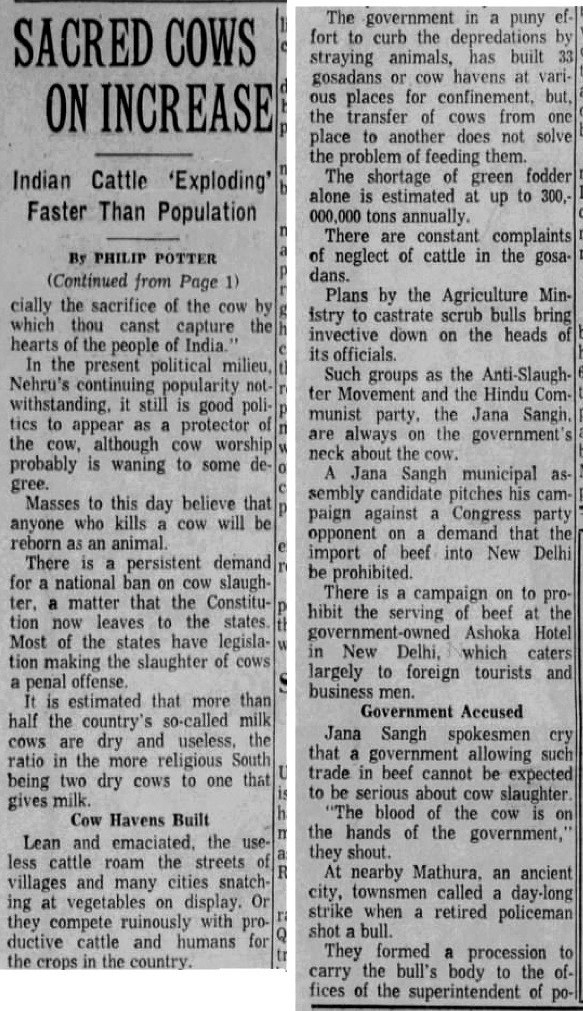
Posted By: Alex - Mon Oct 28, 2019 -
Comments (0)
Category: Explosives, Religion, Cows

| Who We Are |
|---|
| Alex Boese Alex is the creator and curator of the Museum of Hoaxes. He's also the author of various weird, non-fiction, science-themed books such as Elephants on Acid and Psychedelic Apes. Paul Di Filippo Paul has been paid to put weird ideas into fictional form for over thirty years, in his career as a noted science fiction writer. He has recently begun blogging on many curious topics with three fellow writers at The Inferior 4+1. Contact Us |




